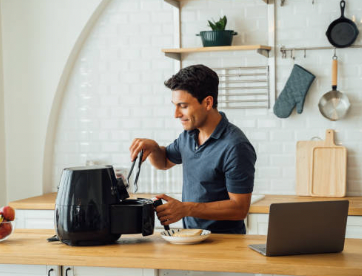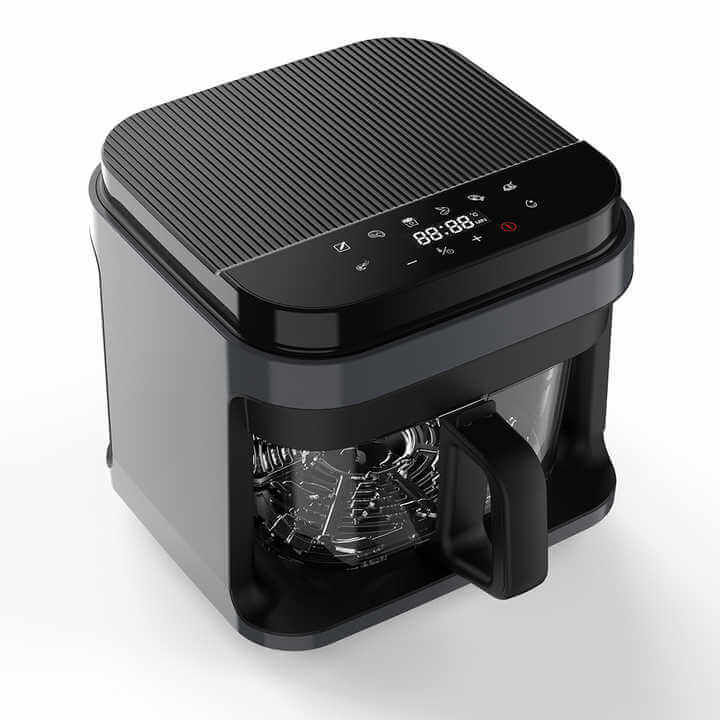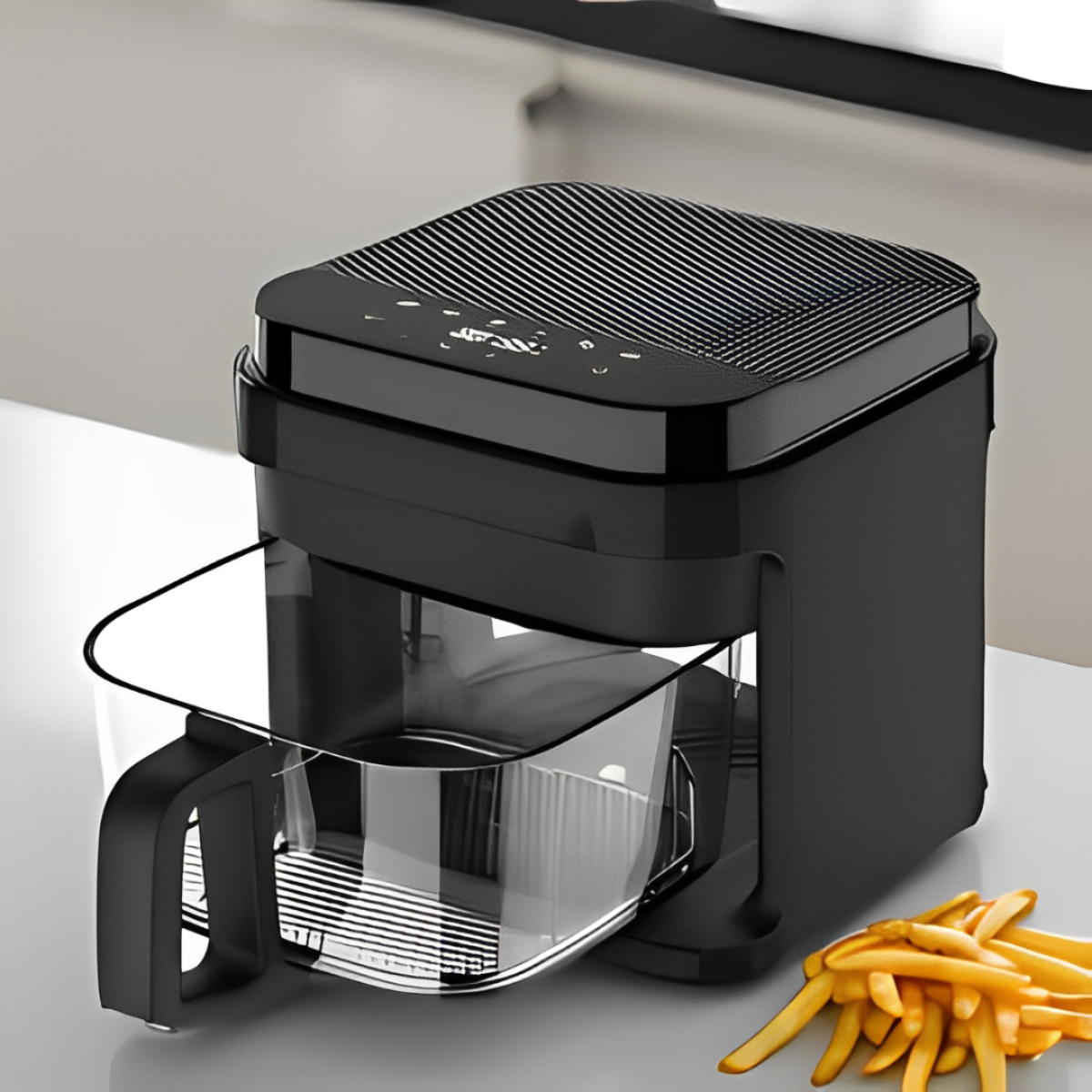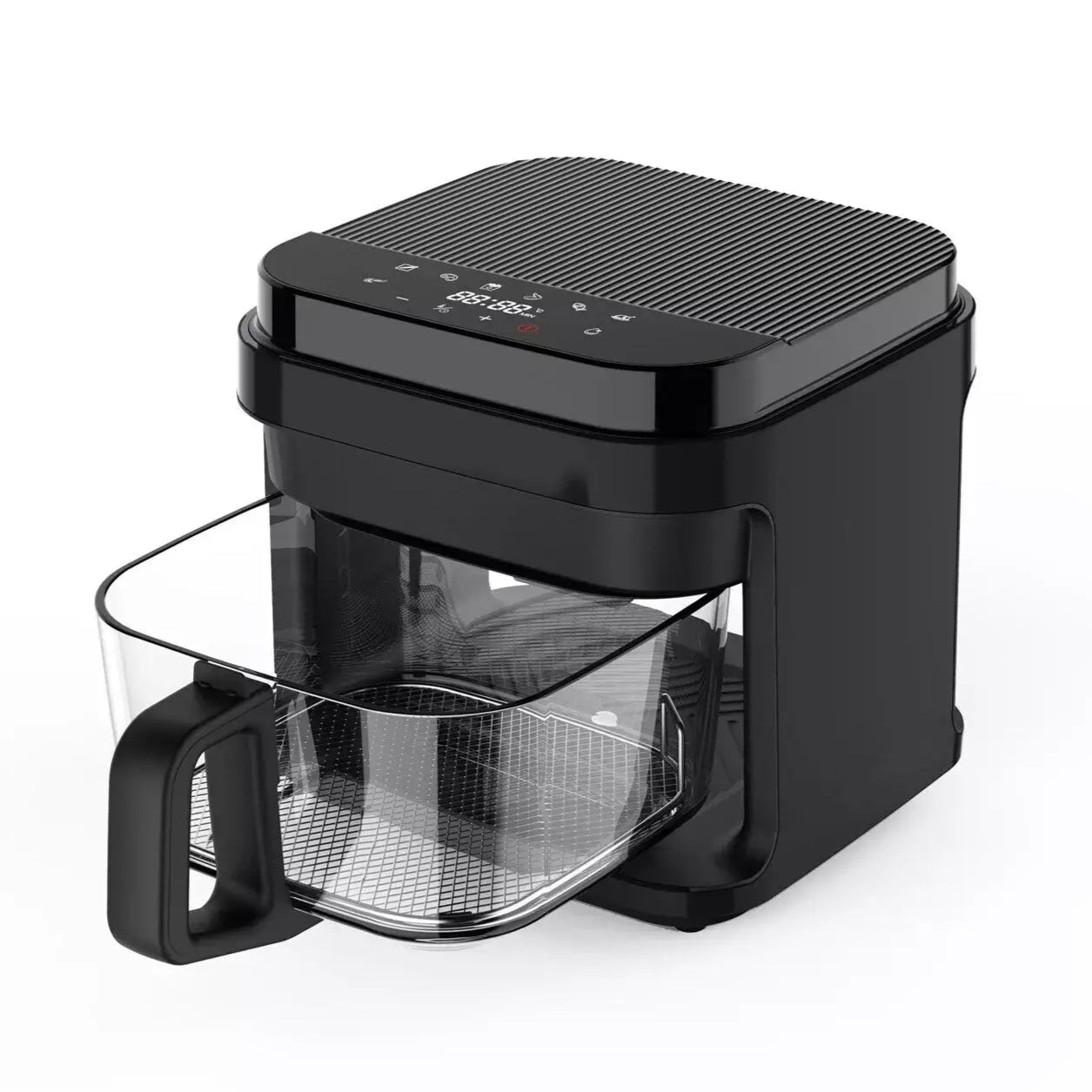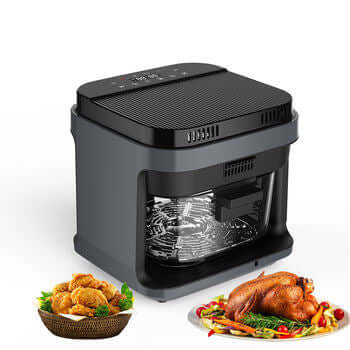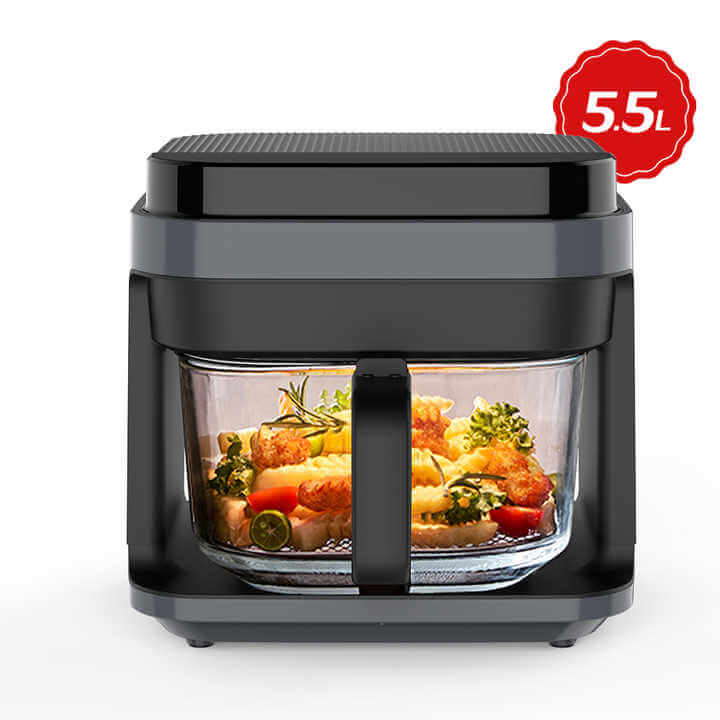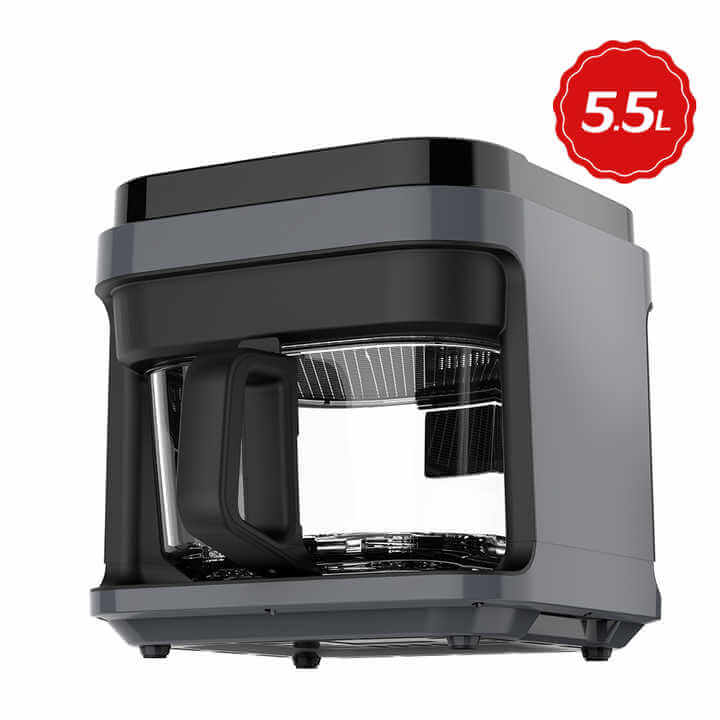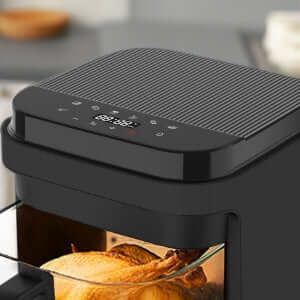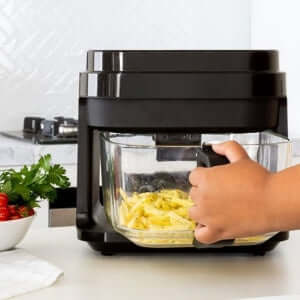Can You Put Glass In an Air Fryer? - Unveiling the Truth
Can you put glass in an air fryer in Australia? Yes, in 2025, it's safe to use oven-safe tempered or borosilicate glass in air fryers in Australia—as long as it can withstand temperatures up to 220°C (425°F). However, avoid using soda-lime glass or non-tempered Pyrex, which may shatter under thermal stress. For safer and more efficient air frying, alternatives like ceramic, silicone, or metal bowls are often recommended for even heat distribution and reduced risk.
The question of whether you can put glass in an air fryer is a common one, especially among those who are new to air fryer cooking. The simple answer is yes, but with caution. Tempered glass and glass Pyrex that can withstand high temperatures are generally considered safe for air fryer use. These materials are designed to handle the heat generated during the cooking process, making them suitable options for air fryer recipes.
However, not all glass is created equal. Soda-lime glass, which is commonly found in kitchenware, may not fare well under the intense heat of air fryers. Cooking in glass requires understanding the material's heat tolerance to prevent any accidents or damage to the glassware. Therefore, identifying the type of glass before placing it in an air fryer is crucial.
Understanding the Dynamics of Glass Cookware in Air Fryers
Placing a glass dish in an air fryer involves more than just temperature considerations. The unique cooking environment of an air fryer, where hot air circulates rapidly, demands cookware that can handle not just the heat but also the air pressure without compromising the cooking process.
Identifying Oven-Safe Glass Bakeware
To safely use glass bakeware in an air fryer, it's essential to check the maximum temperature recommendation. Oven-safe glass indicates it can tolerate the high temperatures generated within an air fryer without risking damage to the dish or the appliance.
Pros
Using glass in an air fryer offers several benefits. Glass cookware heats evenly, ensuring that food cooks uniformly. This is particularly advantageous for dishes requiring consistent temperatures. Additionally, glass is non-reactive, meaning it won't release harmful chemicals into food during cooking, making it a healthy choice for air fryer recipes.
Cons
Despite its advantages, glass presents challenges in an air fryer. The risk of thermal shock, where rapid temperature changes cause glass to crack or shatter, is a significant concern. Furthermore, glass's heavy weight compared to other cookware can make it less ideal for use in air fryers, potentially affecting the appliance's performance.
The Importance of Gradual Temperature Changes
The threat of thermal shock to glass, especially soda-lime glass and ordinary Pyrex dishes, highlights the need for cautious temperature management. Borosilicate glass, known for its superior heat resistance, still requires careful handling. To prevent thermal shock, it's advisable to put a glass dish in an air fryer starting at room temperature and then gradually increase the heat. This approach minimizes stress on the glass, ensuring cooked meals are safely prepared without damaging the cookware or air fryer.
Ensuring Proper Air Circulation with Glass
For successful air frying, ensuring proper air circulation around the food is critical. Using borosilicate or tempered glass, which can withstand the heat and air speed of an air fryer, is advisable. However, it's essential to not obstruct the airflow with oversized dishes. Employing a metal wire rack can facilitate better air circulation, and using parchment paper (but not covering the food entirely) can prevent sticking while not impeding the hot air flow. This careful arrangement ensures the food is cooked evenly and maintains the cooking process's efficiency.
Safety Measures When Using Glass in an Air Fryer
When deciding to put glass in an air fryer, adhering to safety precautions is paramount. This includes verifying the glass's heat tolerance and avoiding rapid temperature changes to prevent putting glass under stress. A glass bowl in an air fryer should be able to handle the appliance's temperatures without shattering, ensuring a safe cooking environment.
Avoiding High Temperatures and Sudden Temperature Shifts
The vulnerability of soda-lime glass and some Pyrex dishes to thermal shock necessitates avoiding high temperatures and sudden temperature shifts. To minimize risk, one should allow glass Pyrex to acclimate to room temperature before use and vice versa. Preheating the air fryer with the empty glass dish inside can also help equalize temperatures, reducing the likelihood of thermal shock for dishes prepared at temperatures up to 425 degrees.
Selecting the Right Shape and Size for Airflow Efficiency
Choosing the right shape and size of the dish is crucial for maintaining efficient air flow in an air fryer. A dish that fits well within the basket ensures that air can circulate freely around the food, preventing uneven cooking. This consideration helps optimize the cooking process, leading to better results.
The Role of Parchment Paper in Enhancing Safety
Using parchment paper beneath glass in an air fryer can mitigate risks by providing an extra layer of protection against uneven cooking. The paper can catch drips and make cleanup easier, but it's important to ensure it doesn't cover the food entirely, as this could impede the air flow necessary for cooking.
The Verdict on Using Glass Cookware in Air Fryers
While glass bowls can be used in air fryers, caution and proper preparation are essential to avoid unevenly cooked results or damage to the cookware in your air fryer. Understanding the material's limitations and how it interacts with the air fryer's environment is key to success.
Tips for Safely Incorporating Glass
To safely incorporate glass baking dishes and bakeware in the air fryer, start with room temperature glass, avoid sudden temperature changes, and ensure the dish's size allows for proper air circulation. Following these guidelines can help harness the benefits of using glass without compromising safety or cooking quality.
Recognising When to Use Alternatives to Glass
When the limitations of glass outweigh its benefits, considering alternatives like ceramic cookware or metal bowls can offer practical solutions. These materials often provide better heat distribution and are less prone to thermal shock, making them suitable for a wide range of air fryer recipes.
Ceramic Cookware
A ceramic bowl, with its excellent heat resistance and ability to distribute heat evenly, presents an ideal alternative to glass in air fryers. This option eliminates the risk of thermal shock while still ensuring that food cooks evenly, making it a safer and more efficient choice for air fryer enthusiasts.
Silicone Cookware
Silicone cookware is a fantastic alternative for those wondering whether glass can endure the unique environment of an air fryer. Notably, silicone can distribute heat evenly and remain resilient under extreme temperatures. This makes it an ideal choice for air frying, where consistent temperature is key to achieving perfect results. Users can enjoy a worry-free cooking experience, knowing their silicone bakeware won't crack or shatter under the air fryer's intense heat.
Metal Bowl Pans
Using a metal cake pan in an air fryer introduces another level of versatility to your cooking repertoire. Metal conducts heat efficiently, ensuring your dishes are cooked thoroughly and evenly. Moreover, a cake pan's design fits perfectly in most air fryers, making it an excellent choice for baking or roasting within this appliance. Its robust nature means it can withstand the air fryer's high temperatures without warping or sustaining damage, offering a reliable and durable cooking option.
Exploring Alternatives to Glass in Air Frying
When considering the use of glass in air fryers, exploring alternatives opens up new culinary possibilities. Metal bowls, for instance, provide a robust and adaptable solution. They can handle the air fryer's high temperatures and ensure even cooking, proving to be an invaluable asset for both novice and experienced cooks. This shift towards metal bowls and other alternatives reflects a growing understanding of how to optimize air fryer use for a variety of recipes.
The Benefits of Using Ceramic and Silicone Cookware
Integrating ceramic and silicone cookware into air frying routines offers distinct advantages. A ceramic bowl, for example, evenly distributes heat, while its smooth surface reduces the risk of food sticking. Similarly, silicone's flexibility and heat resistance make it perfect for a range of dishes, from cakes to casseroles. Both options fit well in the air fryer's cooking basket, enhancing the appliance's versatility without compromising on safety or performance.
Metal Bowls as a Versatile Option
Utilizing a metal bowl or cake pan in an air fryer transforms the appliance into an even more versatile kitchen tool. These metal containers conduct heat effectively, ensuring food cooks evenly. Their robust construction means they can endure the rigors of air frying without damage, making them a practical choice for a wide array of recipes. From baking to roasting, metal bowls and pans expand the possibilities of what can be cooked in an air fryer.
Common Concerns and FAQs
When it comes to air frying, understanding how to manage the appliance's heat and air speed is crucial for optimal results. Ensuring proper air circulation is equally important, as it allows for even cooking and prevents overheating. Addressing these concerns can help users confidently navigate their way through various recipes, making the most of their air fryer's capabilities.
Can You Put Pyrex in an Air Fryer?
Pyrex glassware, known for its tempered glass that can withstand high temperatures, poses a question for air fryer users. While it is heat resistant, Pyrex must be used cautiously in an air fryer. Sudden temperature changes can cause it to break. Therefore, it's advisable to use an oven-safe glass bowl that's specifically marked as suitable for air fryers. This ensures that dishes go straight from the air fryer to the table without incident, keeping safety at the forefront.
What Should You Not Put in An Air Fryer?
While air fryers are versatile, not all materials are safe to use within them. Tempered glass, for example, should be used with caution due to its susceptibility to sudden temperature changes which can lead to shattering. This highlights the importance of selecting cookware that is specifically designed to withstand the dynamic environment of an air fryer, ensuring both safety and cooking efficiency.
Which Containers Are Safe for Air Fryers?
When it comes to selecting a dish for an air fryer, it's essential to choose materials that can endure up to 425 degrees Fahrenheit. Keeping an eye on your food is also crucial, as it ensures that dishes are cooked perfectly without the risk of overheating or undercooking. This careful monitoring, combined with the right container choice, maximizes the effectiveness and safety of air frying.
Maximising the Use of Glass in Air Fryers
For those who prefer to use glass baking dishes in the air fryer, it's possible to do so confidently by adopting certain strategies. Placing a metal wire rack beneath dishes in the air fryer can enhance heat distribution and ensure food cooks evenly. This approach allows users to confidently use glass in their air fryer recipes, observing the food as it cooks to achieve the desired outcome.
Adjusting Cooking Times for Optimal Results
To ensure that food is cooked perfectly in an air fryer, adjusting cooking times is often necessary. This adjustment accounts for the unique way that air fryers circulate hot air around the food, which can cook dishes more quickly than traditional ovens. By monitoring the food and making necessary time adjustments, users can enjoy perfectly cooked meals every time.
Avoiding Common Mistakes with Glassware
When using tempered or oven-safe glass in an air fryer, it's vital to avoid sudden temperature changes that could cause the glass to shatter. Gradually preheating the glass and avoiding placing cold glassware directly into a hot air fryer can mitigate this risk. This careful handling ensures the longevity of your glassware and the safety of your cooking environment.
Wrapping Up the Glass Cookware Debate
The debate around using glass in air fryers can be settled by understanding that not all glass is created equal. With the right precautions and knowledge, dishes in the air fryer can be prepared safely using glass. The key is to ensure the glass air fryer basket is designed to withstand the appliance's heat and ensures even cooking. By adhering to these principles, users can confidently use glass in their air fryer recipes.
Making Informed Decisions for Your Air Fryer Recipes
Choosing the right bakeware for your air fryer recipes is crucial for both safety and culinary success. Oven-safe glass cookware that can withstand high heat is ideal, as it allows for efficient air circulation within the air fryer without obstructing airflow. Monitoring food, like french fries, in a bowl in the air fryer, ensures even cooking. Following the manufacturer's instructions, using dishwasher-safe items, and selecting containers safe to put up to 450 F will lead to the best results. This informed approach enables delicious, safely prepared meals with your air fryer.
Use code BLOG20 for 20% OFF now.
👉 (Shop Now ➜)
FAQs About Putting Glass in an Air Fryer
Q1: Can I put a glass bowl in an air fryer?
A: Yes, but only if it's labelled oven-safe and made of heat-resistant glass like borosilicate or tempered glass.
Q2: Is Pyrex safe in air fryers in 2025?
A: Newer Pyrex is often tempered and safe, but always check the manufacturer’s label for oven-safety.
Q3: What happens if I use the wrong type of glass?
A: Non-tempered glass may crack or shatter due to rapid temperature changes—posing a safety risk.
Q4: Should I preheat the air fryer before putting glass in?
A: It’s safer to place the glass in before preheating or to preheat with the glass dish already inside.
Q5: What’s the best alternative to glass in air fryers?
A: Metal, ceramic, and silicone are safer, more heat-efficient, and less prone to damage than glass.
Best Glass Air Fryer in Australia? or Least Toxic Air Fryer for Healthy Cooking in Australia?






